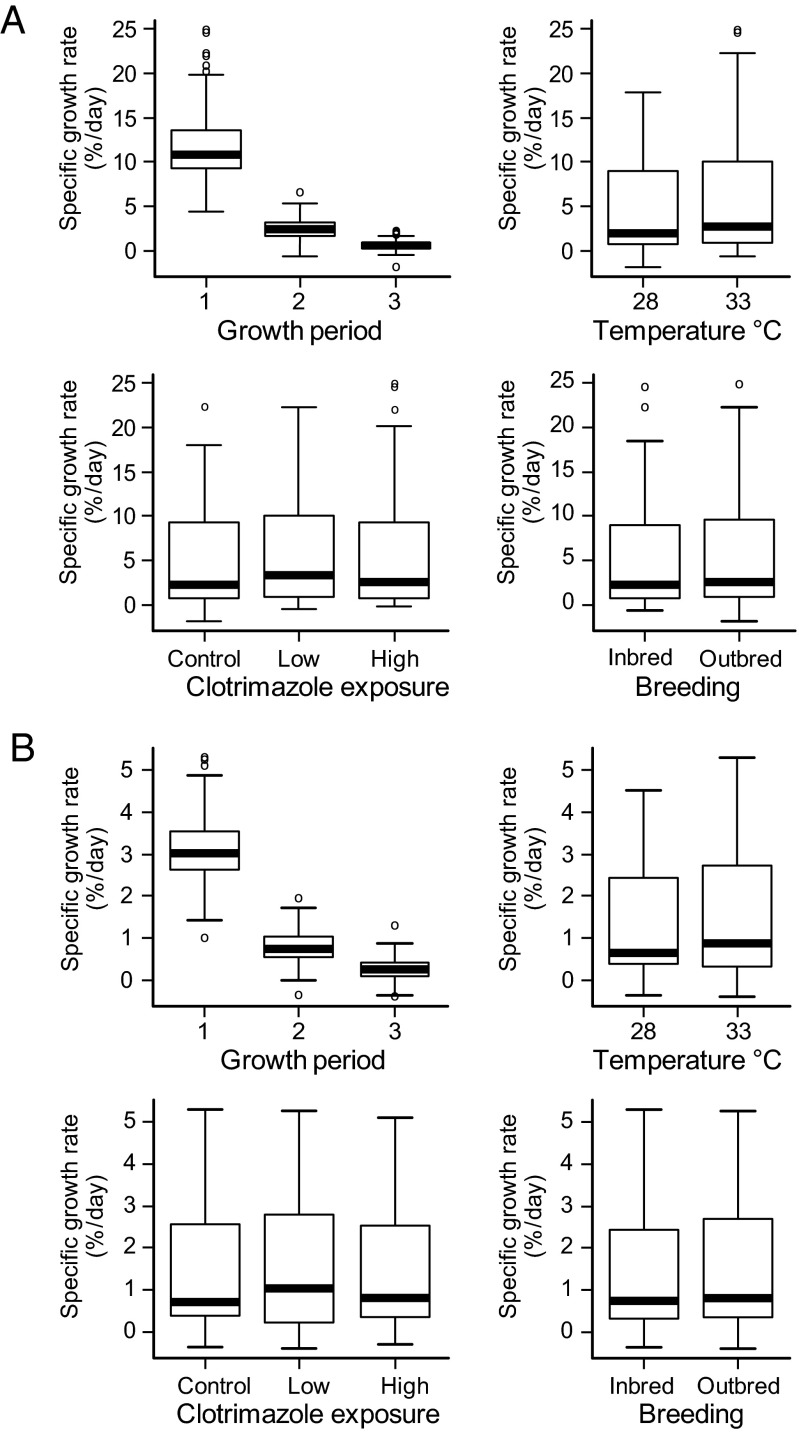Fig. 1.
Specific growth rates vs. growth (exposure) period, temperature, breeding, and clotrimazole treatment. Specific growth rate (% per day) for n = 18 inbred and n = 20 outbred zebrafish families (each stocked with n = 4 individuals per treatment) was based on the following: body weight (A; wet mass in grams) and body length (B; standard length in centimeters). Growth periods are as follows: (i) prepubescence = 40–54/55 dpf; (ii) sexual differentiation = 54/55–74/80 dpf; and (iii) completion of sexual development = 74/80–91/100 dpf for the 33 °C and 28 °C exposures, respectively. Paired time points (x/y dpf) delineate equivalent degree-day exposure periods, thus accounting for increased growth and development rates at elevated temperature. Boxes represent the interquartile range and median (line), and whiskers show the full range of data, excluding outliers (o). Growth rate declined with maturation (growth period) and increased with temperature (both P < 0.015) according to the best-fit lme model (SI Appendix, Table S1.1 A and B).

